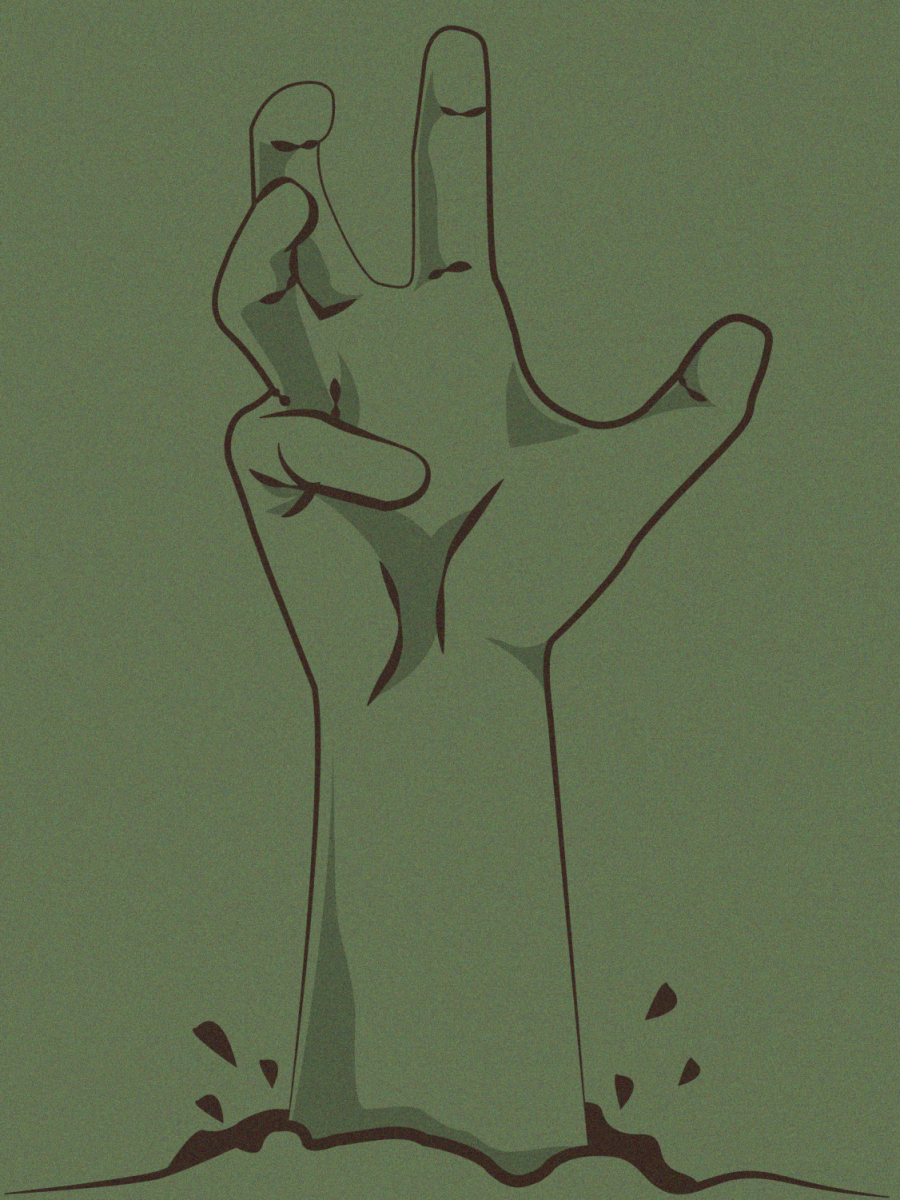Spooky season is well underway as October creeps to an end. Witches, goblins, and monsters will emerge to the streets in a matter of days as crowds of friends snicker and beam in their costumes, despite heebie-geebies they feel. Hidden behind that which enthralls us with Halloween is a fixation with bad-happenings—and it makes people excessively paranoid.
For all of October, people obsess over the thrill of fear; the season warrants such. The impressive collection of scary movies on Netflix is concentrated with paranormal activity and disfigured villains, leaving students clutching their blankie in dorm rooms…for fun. The pervasive thoughts seem to wiggle around logical thinking, even as the young adult viewers murmur, “it is not real, it is not real” under their breath.
However, even when the orange, purple and black fade from decorations, humanity still crawls willingly in the cold, clammy, crippled palm of thriller entertainment.
Fictionalized paranormal films or the characters in a haunted house whose innocence is temporarily covered by a benign plastic mask are secondary to other fear-based entertainment: true crime.
The “true crime” media form retells horrific real-life stories as a dramatized plotline. The scenarios are dipped in an it-could-happen-to-you mentality, leaving viewers weary and on-edge. Unlike the spooky, fictionalized entertainment, these stories cannot be dismissed as the dark corners of a creative film writer’s mind but constructed out of reality.
The biggest issue with this set-up is these movies and shows, though based in reality, add an extra element of artificiality through their presentation style.
The soundtracks are made up of sudden and dissonant crescendos, diminuendos and shrill violins. The music alone gives rise to the hairs on someone’s neck. The stories are told in a remarkably cinematic manner, as actors take viewers through the scene, omnisciently. The stories are cherry-picked to include fear-factors when really, such scenarios are extraordinarily rare. Trigger phrases like “cold-blooded” and “dark, dirty van” are utilized by narrators to reveal unnerving details of the story that, in themselves, have little significance.
In addition to exaggerated details and backdrop, the stories are often told from one side. The criminals are depicted in a completely dehumanizing way and beyond a reversible degree. With no chance of redemption—a snapshot of offenders as the vulnerable and impressionable child every human being was at one point—viewers are left expecting a population of actual monsters living in their world. These characters are born evil, live evil and die evil.
The rarity of homicidal and violent crime is skewed by these entertainment forms. Habitual observers may be convinced the frequency of their view time correlates to the frequency of crime. Even stranger, immediately after exposure to a violent crime program, an individual could feel that somehow, their safety has been compromised since before viewing.
These programs are stuffed full of strategically placed images and soundtracks that intend to give audiences the willies. Films and shows are all fun Halloween shenanigans until it causes actual shifts in world view. Excessive paranoia has and will affect viewer decisions as a result. Viewers of violent, thriller programming should practice deliberation when exposing themselves to similar media.
Categories:
Paranoia from thrill-entertainment
October 29, 2019
0
Donate to The University Star
Your donation will support the student journalists of Texas State University. Your contribution will allow us to purchase equipment and cover our annual website hosting costs.
More to Discover






